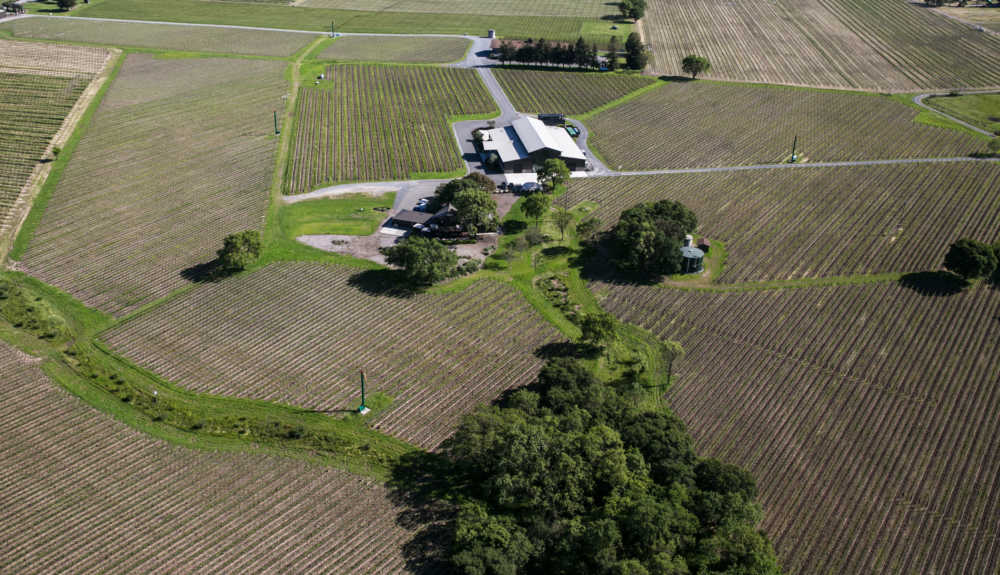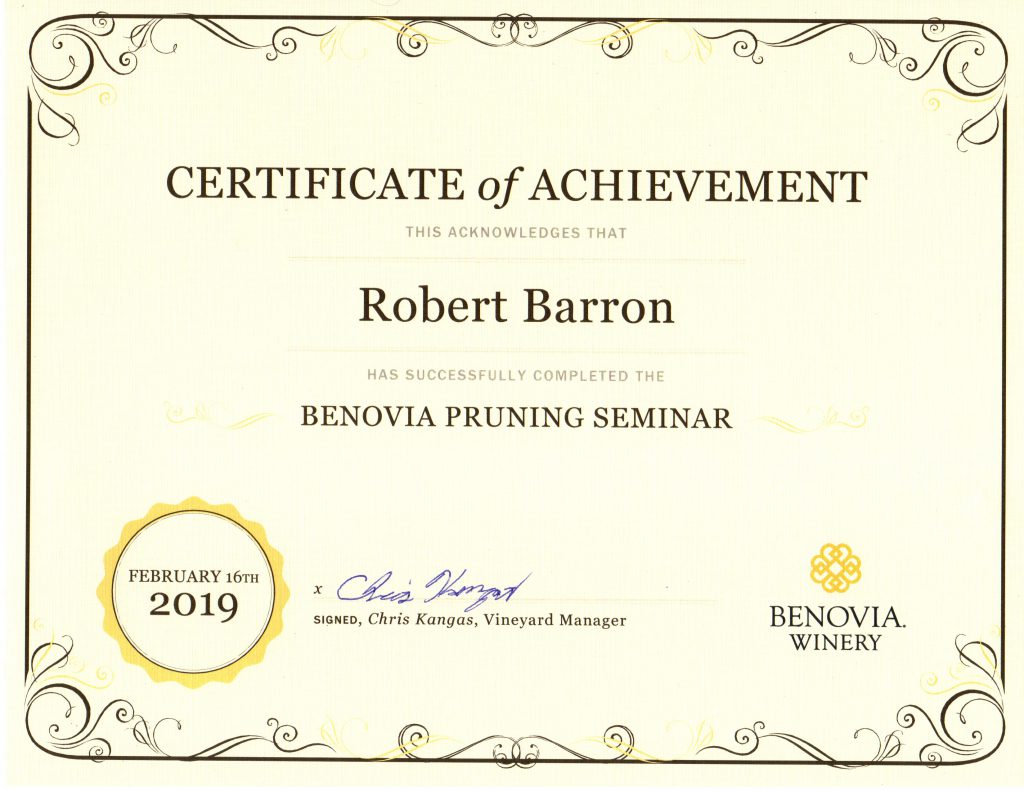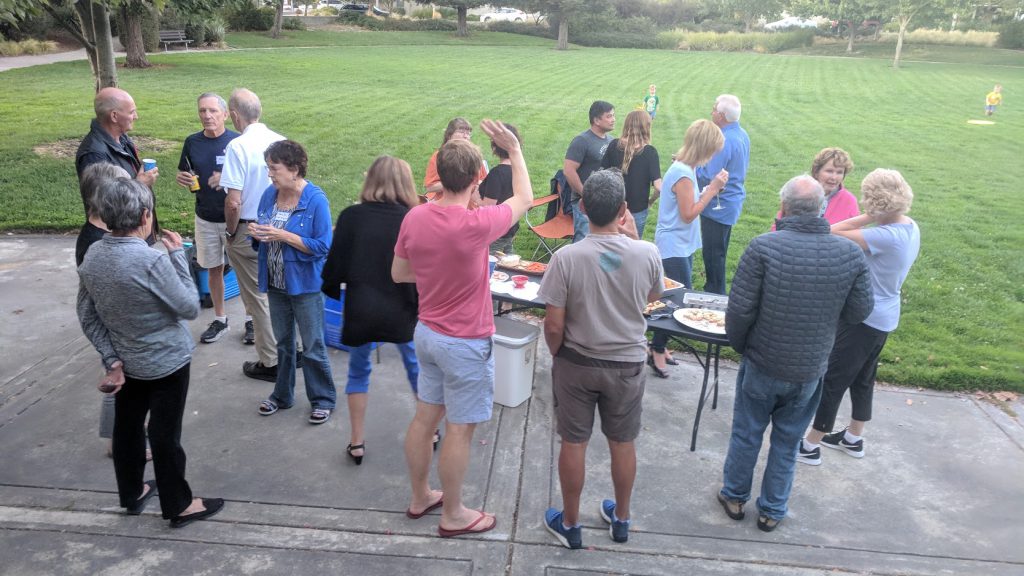Since moving to Sonoma, Penny and I have taken an increased interest in wine. We’re not content to merely drink the final product, though that’s fun too. We both took an interest in how and why things are done the way they are. A recent event held at Benovia Winery provided us with another opportunity to create a greater appreciation for how wine is made.

The Benovia Pruning Seminar provided instruction and hands-on experience of vine pruning. We learned a lot and the vineyard workers who assisted the group were good sports. The speed at which they make pruning decisions is impressive.
There are multiple methods of pruning a vine and we learned two techniques, cordon pruning (a.k.a spur pruning) and cane pruning. Vineyard Manager Chris Kangas said we would never look at vineyards as we drove by them the same way after the seminar. He was right. As we drive through the countryside now we compare and contrast the pruning styles of each of the blocks we pass.
For our efforts we were each rewarded with a certificate of achievement.

What are the other methods of pruning? We’re not sure but we’ve seen some old vine Zin vineyards in particular that do not match any logical or uniform pattern. The growers just kind of let the vines do their own thing. We’ve coined the term laissez-faire pruning for those examples.
No visit to a winery would be complete without a tasting. We were able to sample some of Benovia’s Chardonnay, Pinot Noir and Zinfandel. A few of the wines were made with grapes from the very fields we had trampled on earlier. Smartly, the tasting took place after the participants handled sharp instruments in the vineyard!













